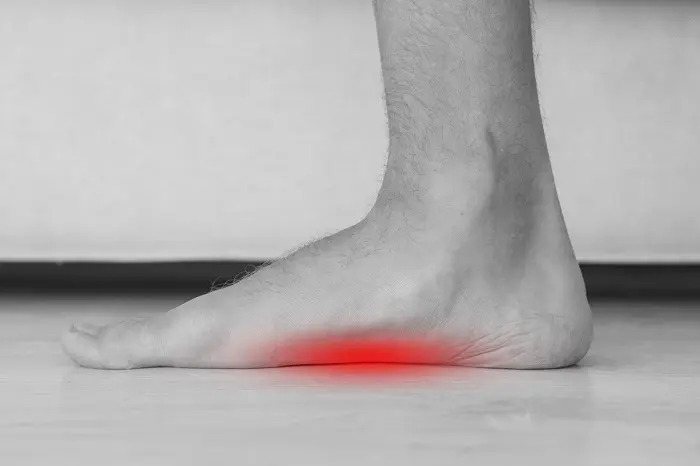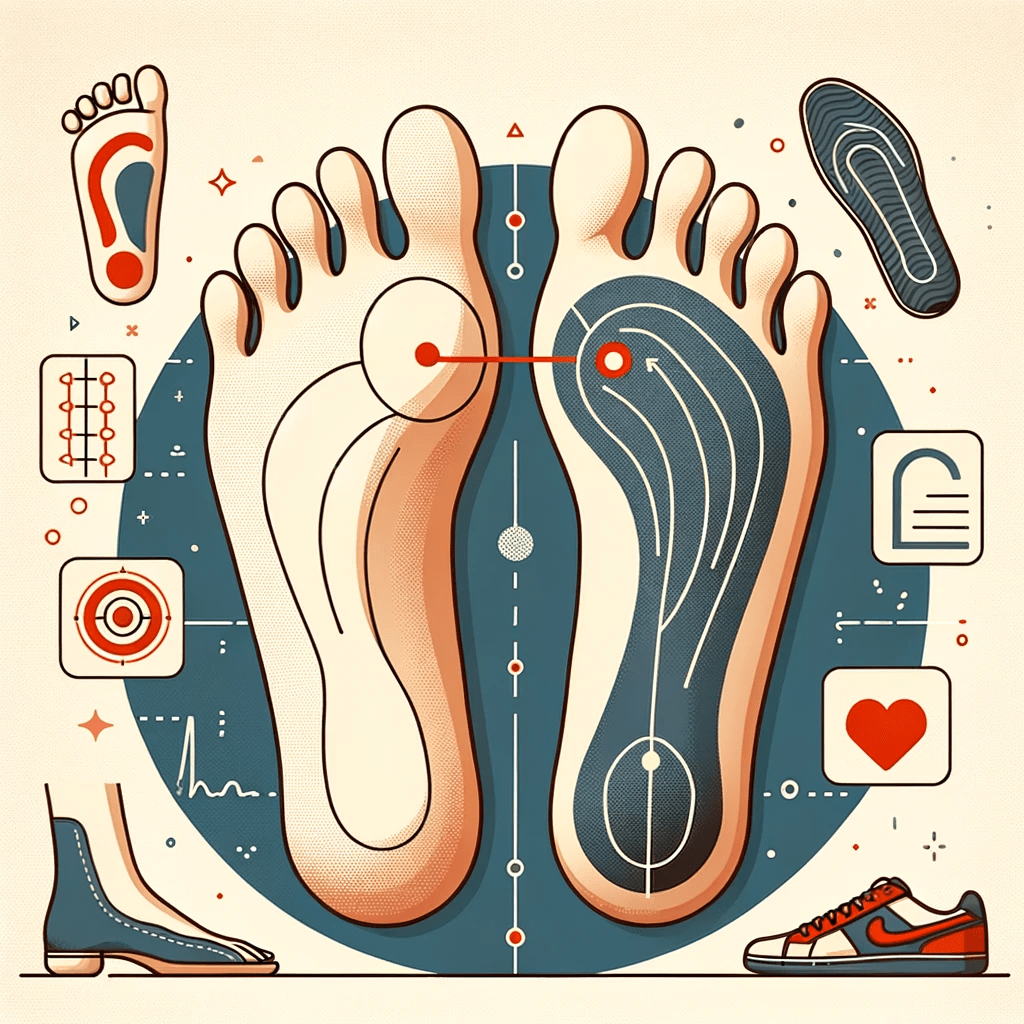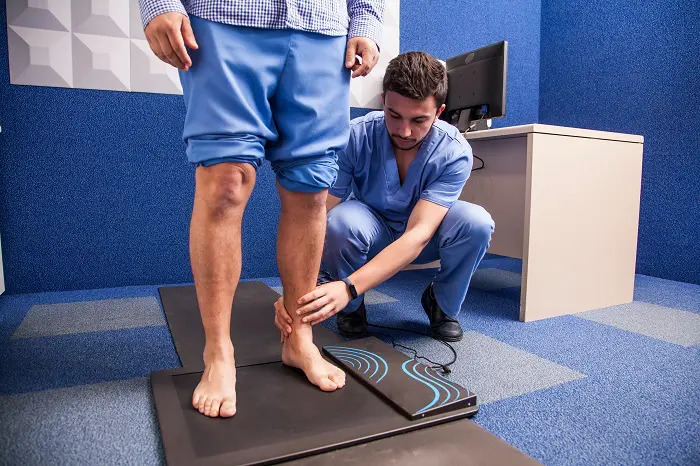Phone: +44 (0)20 8492 1600
Need help or have a question?
Contact us at: [email protected]
| Section | Details |
|---|---|
| Overview | Flat feet, or pes planus, is a common condition affecting up to a quarter of the population. It can lead to discomfort, mobility issues, and long-term joint damage. |
| Definition | Flat feet occur when the medial longitudinal arch is flatter than normal, causing the sole of the foot to fully touch the ground. |
| Types of Flat Feet | 1. Flexible Flat Foot (common in children, may persist into adulthood) 2. Rigid Flat Foot (flat arch in any position, can develop in childhood or adulthood) 3. Fallen Arch (adult-acquired, sudden collapse of the foot’s arch) |
| Diagnosis | Easily detected by feeling under the foot’s arch or examining footprints. Professional diagnosis may be required in mild cases. |
| Causes | In children: heredity, loose ligaments, muscular weakness, tight Achilles tendon. In adults: osteoarthritis, rheumatoid arthritis, overuse, injury, muscular weakness. |
| Symptoms | Foot pain, heel or ankle pain, knee/hip/back pain, shin splints, aching or fatigue in leg muscles, feet pointing outwards, swelling. |
| Treatments | Painkillers, insoles, orthotics, foot and calf exercises, specialized footwear, physiotherapy, advice on walking patterns. |
Feet are more complex than you would imagine. Not only do they have to support your entire body weight, but they must also allow for a wide range of movement that helps support you while you walk, run, or do most physical activities.
Flat foot, also known as pes planus, is a common foot condition which affects up to a quarter of us in some form or another. It doesn’t always affect your life, and many of us don’t even know we have them. For others, though, it can cause significant discomfort and difficulty mobilising, and can lead to long term damage to any of the joints in your leg.

Feet normally have an arch between the heel and the forefoot, meaning the inside of your mid-foot is slightly lifted off the ground when you stand. This arch is known as the medial longitudinal arch and is made up of tough ligaments, tendons, and connective tissue. This arch helps to distribute your weight across the foot and gives you a spring in your step.
When you have flat feet, this arch is much flatter or in some cases completely flat, meaning the whole of the sole of your foot is touching the ground. This can happen to one or both of your feet and can get worse over time.
Think about a footprint – it doesn’t quite have the same shape as a foot. The shape of a footprint usually thins between the heel and pad of the forefoot. In contrast, the footprint of someone with a completely flat foot would look the same shape as their foot, as all of the bottom of their foot is touching the ground.
Both children and adults can have this condition, with varying causes based on the age of onset. Types include:

Determining if you have flat feet is straightforward, though mild cases may need a healthcare professional’s diagnosis. To check, simply feel under your foot’s arch while standing. If you can’t slide your fingers beneath, near your great toe (or Big toe), this condition is likely present.
You can also try wetting your feet and standing up on a flat surface where it will leave a footprint. If the whole of the surface of your foot is visible in the footprint, you’re likely to have flat feet.
If you have the symptoms listed below, but can’t tell if you have flat feet from these tests, it’s better to get it checked by a doctor, podiatrist, or other healthcare professional.
Babies are born with flat feet, as it takes time for their arches to develop. Typically, this condition improves post-infancy, but some children may experience flexible flat feet. This involves a flat arch visible only during weight-bearing activities, persisting through much of their childhood. Children will often grow out of their flat feet. However, sometimes flat feet persist into adulthood and may go on to cause foot pain and problems. Causes of flat feet in children include:
Flat feet in adults have either persisted following childhood or have occurred when the person is an adult. If they develop in adulthood, this can either occur suddenly, such as after an injury. Or slowly over time due to wear and tear in your bones, ligaments, and muscles.
Causes in adulthood include:
However, having these conditions doesn’t necessarily lead to developing flat feet. Adult risk factors include:

Many people with flat feet may never realise it, as the condition often causes no symptoms or problems. Even if issues do arise, they are usually simple to treat and have minimal impact on daily life.
Flat feet can change the way you walk, cause muscle strain in your feet and ankles, or cause discomfort when you are walking. All these consequences of flat feet can cause foot pain, which is the most common symptom of flat feet. Plantar fasciitis, a condition where there is inflammation of a thick band of tissue in your foot causing pain near your heel when you walk, is more likely if you have flat feet.
Your ankles could roll inwards while you walk, known as overpronation. This will affect your feet and ankles and can also go on to cause problems in other joints such as the knees, hips, and spine. If you’re suffering from overpronation because of your flat feet, you must take steps to treat your flat feet to prevent longer-term damage to your joints.
If you think you have flat feet but aren’t sure if it’s causing you any problems, you should see a doctor or podiatrist.
Many people with flat feet will never experience any symptoms or discomfort. The most commonly experienced symptom is foot pain, caused by straining and over-stretching of the muscles, tendons, and ligaments in your foot.
Symptoms of flat feet include:
If you are experiencing any of these symptoms, the good news is that simple treatments can be very effective. If your symptoms are severe, however, you must see your GP or a podiatrist.
Treatment is very important if you are experiencing any of the symptoms above. Avoiding treatment and trying to put up with your pain might cause lasting damage to your feet or other joints in your legs.
Your flat arches may never fully recover, but there are plenty of things you can do to improve your symptoms and the flatness of your feet. Here are some simple treatments for flat feet that you can try at home:
Appropriate shoes and orthotics are essential to ensure the feet are well supported. This can help you to build up the strength in your feet, ankles, and leg. Profoot offers supportive insoles such as the Heel & Arch Support insoles which reduce the impact of your feet by providing a firm shock absorber to support the arch in your foot.
If you have any risk factors, such as obesity and high blood pressure, you should seek advice from a healthcare professional on how to manage these conditions better. Being a healthy weight reduces the pressure you put on your feet and will make other treatments for flat feet more effective. If your symptoms allow for it, regular gentle exercise such as yoga and walking can help build up the strength in your legs without putting too much strain on your feet.
If simple measures to treat flat feet don’t fully improve your symptoms, your GP or local podiatrist may be able to help rebuild the arch in your foot and treat any of the causes of flat feet. They may recommend measures including:
This article was written by Dr. James Philip MBChB who graduated from the University of Manchester in 2015 and went on to train in hospitals across the North West of England. He has experience working in both hospital medicine, and the community, and played his part as a front line worker on the COVID-19 wards. He now works as a freelance medical writer and medical education entrepreneur.